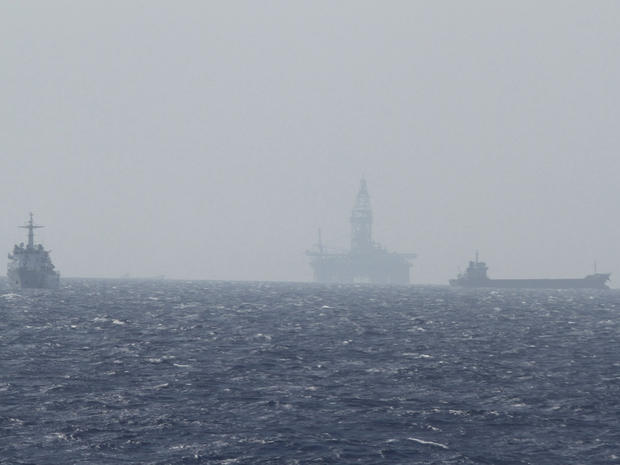China retrieves citizens from Vietnam in wake of deadly riots sparked by controversial oil rig
VUNG ANG, Vietnam -- Hundreds of Chinese workers left Vietnam on Monday on a ship chartered by their government after Beijing's deployment of a large oil rig in a disputed patch of the South China Sea triggered deadly rioting last week.
Two ships with a capacity of 1,000 passengers each arrived at Vung Ang port early Monday morning. One departed after a few hours, according to an Associated Press reporter outside the facility who saw the workers getting on board.
Vung Ang port is part of a large, under-construction Taiwanese steel mill complex 217 miles south of Hanoi that was overrun by an anti-China mob on Wednesday and Thursday. Two Chinese workers were killed and 140 injured in the attack, which also left parts of the facility on fire. Linh said around 3,000 Chinese workers were employed constructing the complex.
Tensions between Hanoi and Beijing are running at their highest for years. Soon after Beijing deployed the rig on May 1, Hanoi sent ships to confront it. They are now locked in a standoff with Chinese ships protecting the rig, raising fears of possible conflict.
Vietnam has been trying to rally international support for its stance. The United States has labelled China's move as provocative.
There has been no violence or protests since last Thursday, and Chinese people have been able to leave the country independently with no impediments since then.
While noting that countries are obligated to help their citizens, Jonathan London, a Vietnam expert at Hong Kong's City University, said sending ships "broadcasts to the world a sense that China is a victim, creates an image of a destabilized Vietnam (and) sends ominous signals and veiled threats of punitive action."
"This maneuver might be perceived as indicating that (Chinese President Xi Jinping) is more interested in deepening rather than alleviating the prevailing sense of crisis which, if true, does not bode well for those hoping for de-escalation and newly-imaginative attempts at conflict resolution," he wrote in an email.
Around 400 other factories around the country were damaged or destroyed in mob violence, most in industrial parks close to southern Ho Chi Minh City. Many factories were not Chinese-run but Taiwanese or from elsewhere in Asia, apparently targeted mistakenly or by gangs intent on looting.
Vietnam's government, furious at China's positioning of the rig, initially allowed street protests, a rarity in the authoritarian country. But since the rioting they have cracked down, aware that the violence threatened the country's reputation as a safe and cheap destination for foreign manufacturers to establish.
